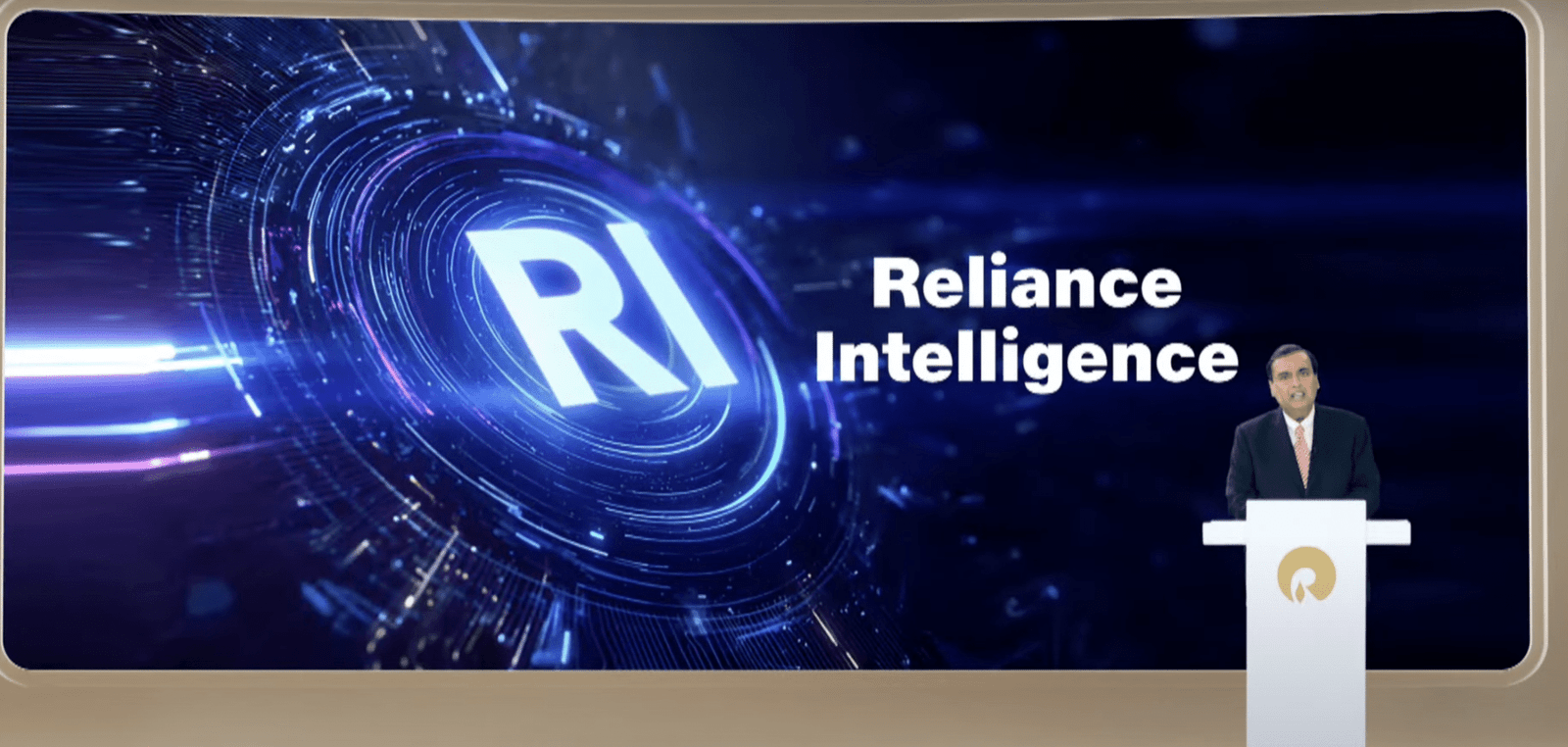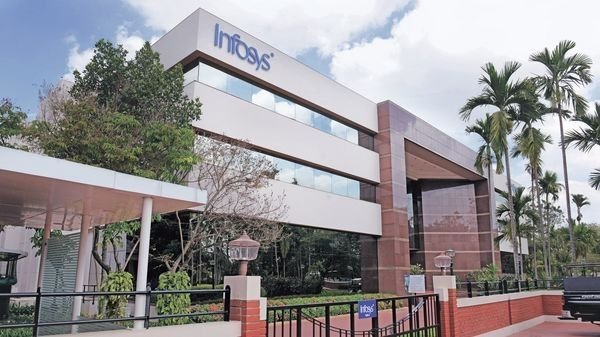Jobs & Careers
5 Simple Steps to Mastering Docker for Data Science


Image by Author
Data science projects are notorious for their complex dependencies, version conflicts, and “it works on my machine” problems. One day your model runs perfectly on your local setup, and the next day a colleague can’t reproduce your results because they have different Python versions, missing libraries, or incompatible system configurations.
This is where Docker comes in. Docker solves the reproducibility crisis in data science by packaging your entire application — code, dependencies, system libraries, and runtime — into lightweight, portable containers that run consistently across environments.
# Why Focus on Docker for Data Science?
Data science workflows have unique challenges that make containerization particularly valuable. Unlike traditional web applications, data science projects deal with massive datasets, complex dependency chains, and experimental workflows that change frequently.
Dependency Hell: Data science projects often require specific versions of Python, R, TensorFlow, PyTorch, CUDA drivers, and dozens of other libraries. A single version mismatch can break your entire pipeline. Traditional virtual environments help, but they don’t capture system-level dependencies like CUDA drivers or compiled libraries.
Reproducibility: In practice, others should be able to reproduce your analysis weeks or months later. Docker, therefore, eliminates the “works on my machine” problem.
Deployment: Moving from Jupyter notebooks to production becomes super smooth when your development environment matches your deployment environment. No more surprises when your carefully tuned model fails in production due to library version differences.
Experimentation: Want to try a different version of scikit-learn or test a new deep learning framework? Containers let you experiment safely without breaking your main environment. You can run multiple versions side by side and compare results.
Now let’s go over the five essential steps to master Docker for your data science projects.
# Step 1: Learning Docker Fundamentals with Data Science Examples
Before jumping into complex multi-service architectures, you need to understand Docker’s core concepts through the lens of data science workflows. The key is starting with simple, real-world examples that demonstrate Docker’s value for your daily work.
// Understanding Base Images for Data Science
Your choice of base image significantly impacts your image’s size. Python’s official images are reliable but generic. Data science-specific base images come pre-loaded with common libraries and optimized configurations. Always try building a minimal image for your applications.
FROM python:3.11-slim
WORKDIR /app
COPY requirements.txt .
RUN pip install -r requirements.txt
COPY . .
CMD ["python", "analysis.py"]
This example Dockerfile shows the common steps: start with a base image, set up your environment, copy your code, and define how to run your app. The python:3.11-slim image provides Python without unnecessary packages, keeping your container small and secure.
For more specialized needs, consider pre-built data science images. Jupyter’s scipy-notebook includes pandas, NumPy, and matplotlib. TensorFlow’s official images include GPU support and optimized builds. These images save setup time but increase container size.
// Organizing Your Project Structure
Docker works best when your project follows a clear structure. Separate your source code, configuration files, and data directories. This separation makes your Dockerfiles more maintainable and enables better caching.
Create a project structure like this: put your Python scripts in a src/ folder, configuration files in config/, and use separate files for different dependency sets (requirements.txt for core dependencies, requirements-dev.txt for development tools).
▶️ Action item: Take one of your existing data analysis scripts and containerize it using the basic pattern above. Run it and verify you’re getting the same results as your non-containerized version.
# Step 2: Designing Efficient Data Science Workflows
Data science containers have unique requirements around data access, model persistence, and computational resources. Unlike web applications that primarily serve requests, data science workflows often process large datasets, train models for hours, and need to persist results between runs.
// Handling Data and Model Persistence
Never bake datasets directly into your container images. This makes images huge and violates the principle of separating code from data. Instead, mount data as volumes from your host system or cloud storage.
This approach defines environment variables for data and model paths, then creates directories for them.
ENV DATA_PATH=/app/data
ENV MODEL_PATH=/app/models
RUN mkdir -p /app/data /app/models
When you run the container, you mount your data directories to these paths. Your code reads from the environment variables, making it portable across different systems.
// Optimizing for Iterative Development
Data science is inherently iterative. You’ll modify your analysis code dozens of times while keeping dependencies stable. Write your Dockerfile to make use of Docker’s layer caching. Put stable elements (system packages, Python dependencies) at the top and frequently changing elements (your source code) at the bottom.
The key insight is that Docker rebuilds only the layers that changed and everything below them. If you put your source code copy command at the end, changing your Python scripts won’t force a rebuild of your entire environment.
// Managing Configuration and Secrets
Data science projects often need API keys for cloud services, database credentials, and various configuration parameters. Never hardcode these values in your containers. Use environment variables and configuration files mounted at runtime.
Create a configuration pattern that works both in development and production. Use environment variables for secrets and runtime settings, but provide sensible defaults for development. This makes your containers secure in production while remaining easy to use during development.
▶️ Action item: Restructure one of your existing projects to separate data, code, and configuration. Create a Dockerfile that can run your analysis without rebuilding when you modify your Python scripts.
# Step 3: Managing Complex Dependencies and Environments
Data science projects often require specific versions of CUDA, system libraries, or conflicting packages. With Docker, you can create specialized environments for different parts of your pipeline without them interfering with each other.
// Creating Environment-Specific Images
In data science projects, different stages have different requirements. Data preprocessing might need pandas and SQL connectors. Model training needs TensorFlow or PyTorch. Model serving needs a lightweight web framework. Create targeted images for each purpose.
# Multi-stage build example
FROM python:3.9-slim as base
RUN pip install pandas numpy
FROM base as training
RUN pip install tensorflow
FROM base as serving
RUN pip install flask
COPY serve_model.py .
CMD ["python", "serve_model.py"]
This multi-stage approach lets you build different images from the same Dockerfile. The base stage contains common dependencies. Training and serving stages add their specific requirements. You can build just the stage you need, keeping images focused and lean.
// Managing Conflicting Dependencies
Sometimes different parts of your pipeline need incompatible package versions. Traditional solutions involve complex virtual environment management. With Docker, you simply create separate containers for each component.
This approach turns dependency conflicts from a technical nightmare into an architectural decision. Design your pipeline as loosely coupled services that communicate through files, databases, or APIs. Each service gets its perfect environment without compromising others.
▶️ Action item: Create separate Docker images for data preprocessing and model training phases of one of your projects. Ensure they can pass data between stages through mounted volumes.
# Step 4: Orchestrating Multi-Container Data Pipelines
Real-world data science projects involve multiple services: databases for storing processed data, web APIs for serving models, monitoring tools for tracking performance, and different processing stages that need to run in sequence or parallel.
// Designing a Service Architecture
Docker Compose lets you define multi-service applications in a single configuration file. Think of your data science project as a collection of cooperating services rather than a monolithic application. This architectural shift makes your project more maintainable and scalable.
# docker-compose.yml
version: '3.8'
services:
database:
image: postgres:13
environment:
POSTGRES_DB: dsproject
volumes:
- postgres_data:/var/lib/postgresql/data
notebook:
build: .
ports:
- "8888:8888"
depends_on:
- database
volumes:
postgres_data:
This example defines two services: a PostgreSQL database and your Jupyter notebook environment. The notebook service depends on the database, ensuring proper startup order. Named volumes ensure data persists between container restarts.
// Managing Data Flow Between Services
Data science pipelines often involve complex data flows. Raw data gets preprocessed, features are extracted, models are trained, and predictions are generated. Each stage might use different tools and have different resource requirements.
Design your pipeline so that each service has a clear input and output contract. One service might read from a database and write processed data to files. The next service reads those files and writes trained models. This clear separation makes your pipeline easier to understand and debug.
▶️ Action item: Convert one of your multi-step data science projects into a multi-container architecture using Docker Compose. Ensure data flows correctly between services and that you can run the entire pipeline with a single command.
# Step 5: Optimizing Docker for Production and Deployment
Moving from local development to production requires attention to security, performance, monitoring, and reliability. Production containers need to be secure, efficient, and observable. This step transforms your experimental containers into production-ready services.
// Implementing Security Best Practices
Security in production starts with the principle of least privilege. Never run containers as root; instead, create dedicated users with minimal permissions. This limits the damage if your container is compromised.
# In your Dockerfile, create a non-root user
RUN addgroup -S appgroup && adduser -S appuser -G appgroup
# Switch to the non-root user before running your app
USER appuser
Adding these lines to your Dockerfile creates a non-root user and switches to it before running your application. Most data science applications don’t need root privileges, so this simple change significantly improves security.
Keep your base images updated to get security patches. Use specific image tags rather than latest to ensure consistent builds.
// Optimizing Performance and Resource Usage
Production containers should be lean and efficient. Remove development tools, temporary files, and unnecessary dependencies from your production images. Use multi-stage builds to keep build dependencies separate from runtime requirements.
Monitor your container’s resource usage and set appropriate limits. Data science workloads can be resource-intensive, but setting limits prevents runaway processes from affecting other services. Use Docker’s built-in resource controls to manage CPU and memory usage. Also, consider using specialized deployment platforms like Kubernetes for data science workloads, as it can handle scaling and resource management.
// Implementing Monitoring and Logging
Production systems need observability. Implement health checks that verify your service is working correctly. Log important events and errors in a structured format that monitoring tools can parse. Set up alerts both for failure and performance degradation.
HEALTHCHECK --interval=30s --timeout=10s \
CMD python health_check.py
This adds a health check that Docker can use to determine if your container is healthy.
// Deployment Strategies
Plan your deployment strategy before you need it. Blue-green deployments minimize downtime by running old and new versions simultaneously.
Consider using configuration management tools to handle environment-specific settings. Document your deployment process and automate it as much as possible. Manual deployments are error-prone and don’t scale. Use CI/CD pipelines to automatically build, test, and deploy your containers when code changes.
▶️ Action item: Deploy one of your containerized data science applications to a production environment (cloud or on-premises). Implement proper logging, monitoring, and health checks. Practice deploying updates without service interruption.
# Conclusion
Mastering Docker for data science is about more than just creating containers—it’s about building reproducible, scalable, and maintainable data workflows. By following these five steps, you’ve learned to:
- Build solid foundations with proper Dockerfile structure and base image selection
- Design efficient workflows that minimize rebuild time and maximize productivity
- Manage complex dependencies across different environments and hardware requirements
- Orchestrate multi-service architectures that mirror real-world data pipelines
- Deploy production-ready containers with security, monitoring, and performance optimization
Begin by containerizing a single data analysis script, then progressively work toward full pipeline orchestration. Remember that Docker is a tool to solve real problems — reproducibility, collaboration, and deployment — not an end in itself. Happy containerization!
Bala Priya C is a developer and technical writer from India. She likes working at the intersection of math, programming, data science, and content creation. Her areas of interest and expertise include DevOps, data science, and natural language processing. She enjoys reading, writing, coding, and coffee! Currently, she’s working on learning and sharing her knowledge with the developer community by authoring tutorials, how-to guides, opinion pieces, and more. Bala also creates engaging resource overviews and coding tutorials.
Jobs & Careers
‘Reliance Intelligence’ is Here, In Partnership with Google and Meta

Reliance Industries chairman Mukesh Ambani has announced the launch of Reliance Intelligence, a new wholly owned subsidiary focused on artificial intelligence, marking what he described as the company’s “next transformation into a deep-tech enterprise.”
Addressing shareholders, Ambani said Reliance Intelligence had been conceived with four core missions—building gigawatt-scale AI-ready data centres powered by green energy, forging global partnerships to strengthen India’s AI ecosystem, delivering AI services for consumers and SMEs in critical sectors such as education, healthcare, and agriculture, and creating a home for world-class AI talent.
Work has already begun on gigawatt-scale AI data centres in Jamnagar, Ambani said, adding that they would be rolled out in phases in line with India’s growing needs.
These facilities, powered by Reliance’s new energy ecosystem, will be purpose-built for AI training and inference at a national scale.
Ambani also announced a “deeper, holistic partnership” with Google, aimed at accelerating AI adoption across Reliance businesses.
“We are marrying Reliance’s proven capability to build world-class assets and execute at India scale with Google’s leading cloud and AI technologies,” Ambani said.
Google CEO Sundar Pichai, in a recorded message, said the two companies would set up a new cloud region in Jamnagar dedicated to Reliance.
“It will bring world-class AI and compute from Google Cloud, powered by clean energy from Reliance and connected by Jio’s advanced network,” Pichai said.
He added that Google Cloud would remain Reliance’s largest public cloud partner, supporting mission-critical workloads and co-developing advanced AI initiatives.
Ambani further unveiled a new AI-focused joint venture with Meta.
He said the venture would combine Reliance’s domain expertise across industries with Meta’s open-source AI models and tools to deliver “sovereign, enterprise-ready AI for India.”
Meta founder and CEO Mark Zuckerberg, in his remarks, said the partnership is aimed to bring open-source AI to Indian businesses at scale.
“With Reliance’s reach and scale, we can bring this to every corner of India. This venture will become a model for how AI, and one day superintelligence, can be delivered,” Zuckerberg said.
Ambani also highlighted Reliance’s investments in AI-powered robotics, particularly humanoid robotics, which he said could transform manufacturing, supply chains and healthcare.
“Intelligent automation will create new industries, new jobs and new opportunities for India’s youth,” he told shareholders.
Calling AI an opportunity “as large, if not larger” than Reliance’s digital services push a decade ago, Ambani said Reliance Intelligence would work to deliver “AI everywhere and for every Indian.”
“We are building for the next decade with confidence and ambition,” he said, underscoring that the company’s partnerships, green infrastructure and India-first governance approach would be central to this strategy.
The post ‘Reliance Intelligence’ is Here, In Partnership with Google and Meta appeared first on Analytics India Magazine.
Jobs & Careers
Cognizant, Workfabric AI to Train 1,000 Context Engineers

Cognizant has announced that it would deploy 1,000 context engineers over the next year to industrialise agentic AI across enterprises.
According to an official release, the company claimed that the move marks a “pivotal investment” in the emerging discipline of context engineering.
As part of this initiative, Cognizant said it is partnering with Workfabric AI, the company building the context engine for enterprise AI.
Cognizant’s context engineers will be powered by Workfabric AI’s ContextFabric platform, the statement said, adding that the platform transforms the organisational DNA of enterprises, how their teams work, including their workflows, data, rules, and processes, into actionable context for AI agents.Context engineering is essential to enabling AI a
Jobs & Careers
Mastercard, Infosys Join Hands to Enhance Cross-Border Payments

Infosys has announced a partnership with Mastercard to make cross-border payments faster and easier for banks and financial institutions.
The collaboration will give institutions quick access to Mastercard Move, the company’s suite of money transfer services that works across 200 countries and over 150 currencies, reaching more than 95% of the world’s banked population.
Sajit Vijayakumar, CEO of Infosys Finacle, said, “At Infosys Finacle, we are committed to inspiring better banking by helping customers save, pay, borrow and invest better. This engagement with Mastercard Move brings together the agility of our composable banking platform with Mastercard’s unmatched global money movement capabilities—empowering banks to deliver fast and secure cross-border experiences for every customer segment.”
Integration will be powered by Infosys Finacle, helping banks connect with Mastercard’s system in less time and with fewer resources than traditional methods.
Pratik Khowala, EVP and global head of transfer solutions at Mastercard, said, “Through Mastercard Move’s cutting-edge solutions, we empower individuals and organisations to move money quickly and securely across borders.”
The tie-up also comes at a time when global remittances are on the rise. Meanwhile, Anouska Ladds, executive VP of commercial and new payment flows, Asia Pacific at Mastercard, noted, “Global remittances continue to grow, driven by migration, digitalisation and economic development, especially across Asia, which accounted for nearly half of global inflows in 2024.”
He further said that to meet this demand, Mastercard invests in smart money movement solutions within Mastercard Move while expanding its network of collaborators, such as Infosys, to bring the benefits to a more diverse set of users.
Infosys said the partnership will help banks meet growing consumer demand for faster and safer payments.
Dennis Gada, EVP and global head of banking and financial services at Infosys, said, “Financial institutions are prioritising advancements in digital payment systems. Consumers gravitate toward institutions that offer fast, secure and seamless transaction experiences. Our collaboration with Mastercard to enable near real-time, cross-border payments is designed to significantly improve the financial experiences of everyday customers.”
The post Mastercard, Infosys Join Hands to Enhance Cross-Border Payments appeared first on Analytics India Magazine.
-
Tools & Platforms3 weeks ago
Building Trust in Military AI Starts with Opening the Black Box – War on the Rocks
-

 Ethics & Policy1 month ago
Ethics & Policy1 month agoSDAIA Supports Saudi Arabia’s Leadership in Shaping Global AI Ethics, Policy, and Research – وكالة الأنباء السعودية
-

 Events & Conferences3 months ago
Events & Conferences3 months agoJourney to 1000 models: Scaling Instagram’s recommendation system
-

 Jobs & Careers2 months ago
Jobs & Careers2 months agoMumbai-based Perplexity Alternative Has 60k+ Users Without Funding
-

 Funding & Business2 months ago
Funding & Business2 months agoKayak and Expedia race to build AI travel agents that turn social posts into itineraries
-

 Education2 months ago
Education2 months agoVEX Robotics launches AI-powered classroom robotics system
-

 Podcasts & Talks2 months ago
Podcasts & Talks2 months agoHappy 4th of July! 🎆 Made with Veo 3 in Gemini
-

 Podcasts & Talks2 months ago
Podcasts & Talks2 months agoOpenAI 🤝 @teamganassi
-

 Mergers & Acquisitions2 months ago
Mergers & Acquisitions2 months agoDonald Trump suggests US government review subsidies to Elon Musk’s companies
-

 Jobs & Careers2 months ago
Jobs & Careers2 months agoAstrophel Aerospace Raises ₹6.84 Crore to Build Reusable Launch Vehicle

